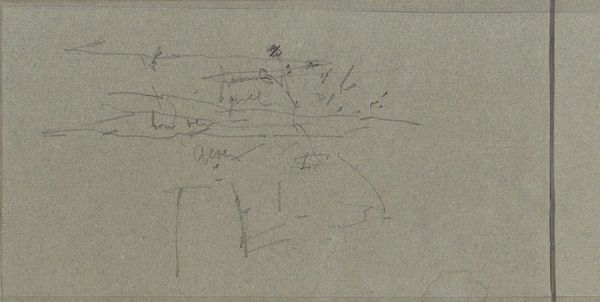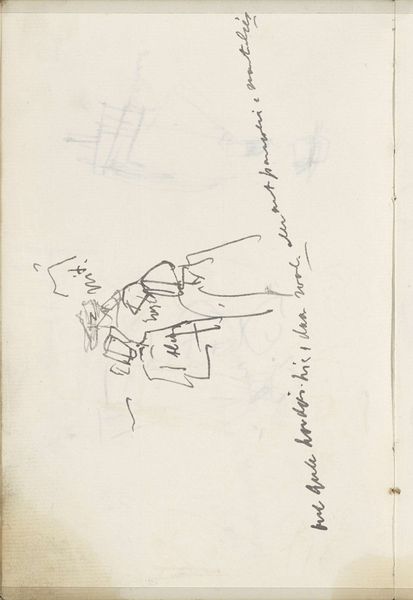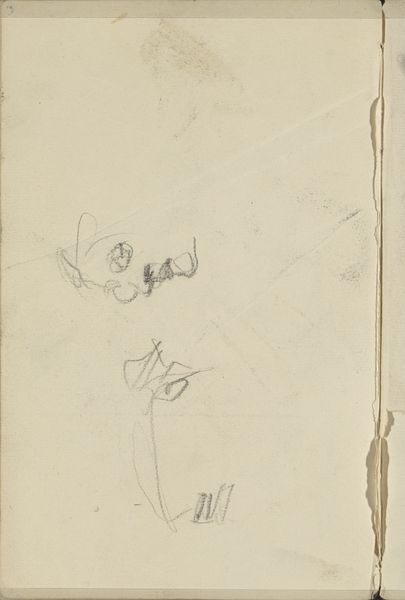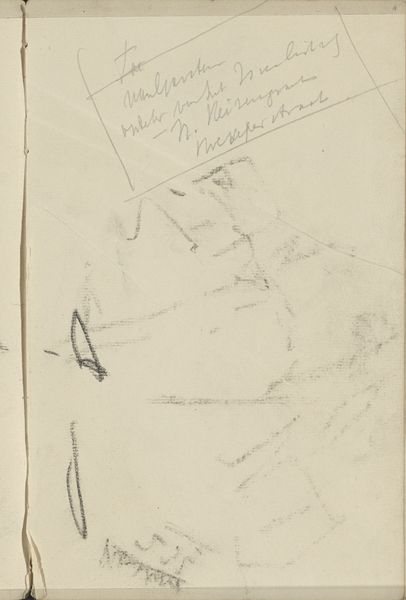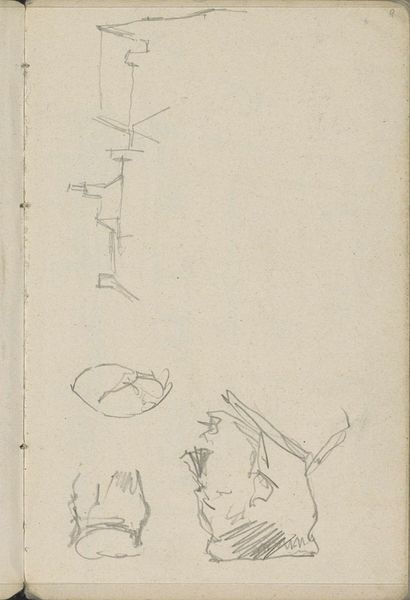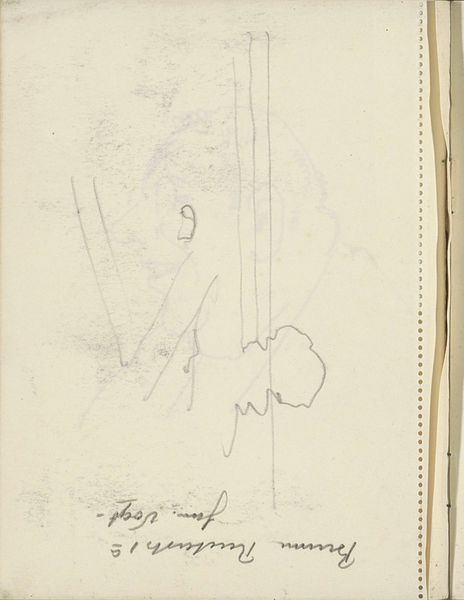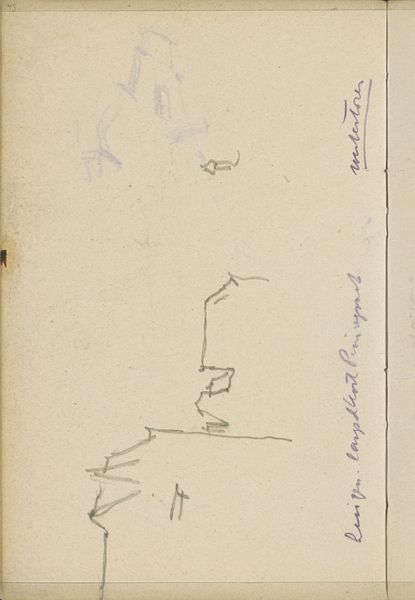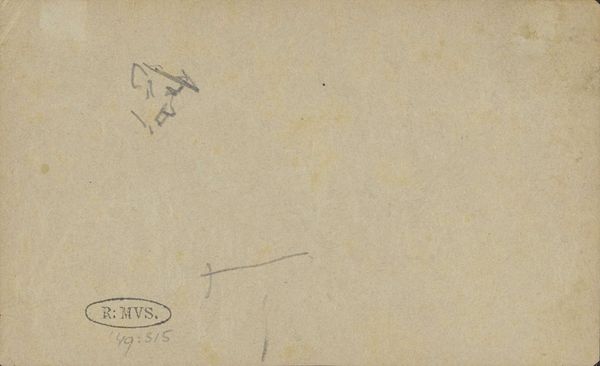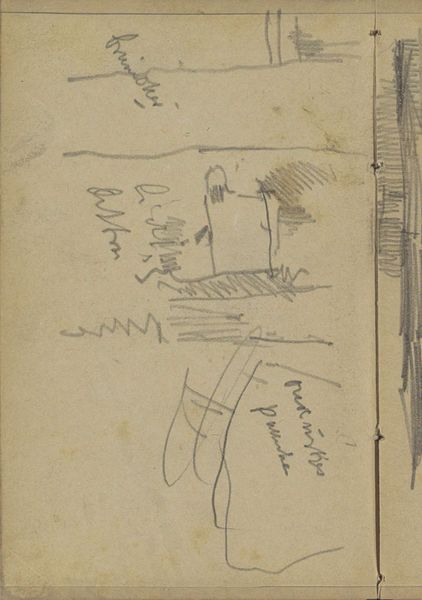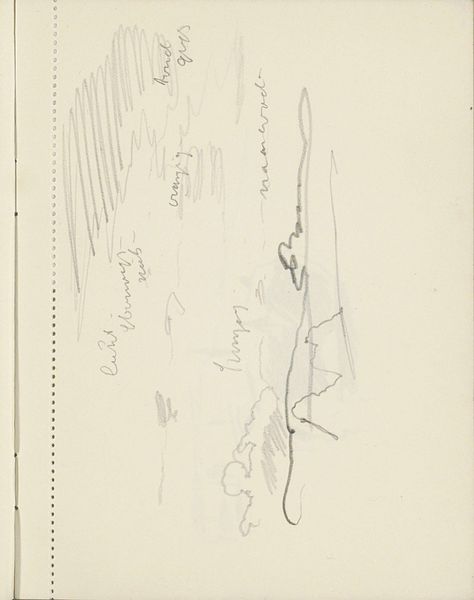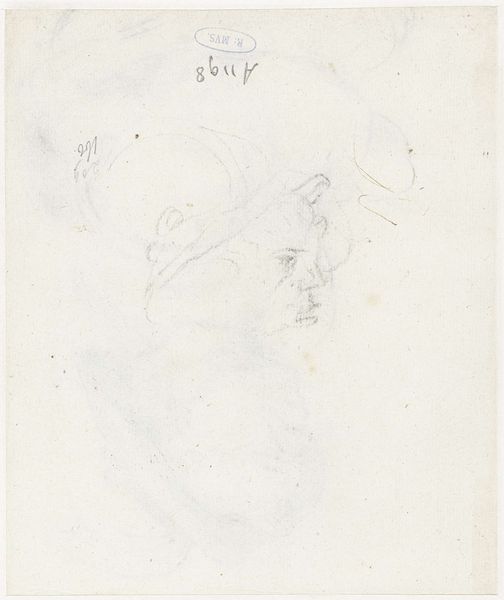
drawing, pencil
#
drawing
#
light pencil work
#
sketch book
#
hand drawn type
#
figuration
#
personal sketchbook
#
idea generation sketch
#
sketchwork
#
ink drawing experimentation
#
pen-ink sketch
#
pencil
#
sketchbook drawing
#
sketchbook art
Copyright: Rijks Museum: Open Domain
Editor: Here we have George Hendrik Breitner’s "Zittende figuur," made between 1880 and 1882, a drawing rendered in pencil. It’s quite gestural; the figure almost emerges from the page through these quick, light strokes. What stands out to you in this piece? Curator: The raw immediacy of Breitner's sketch invites analysis. The linear construction, particularly the layering of strokes, seems almost like a three-dimensional framework. Notice how the density of lines creates implied volume. Do you see how the cross-hatching doesn't just define shadow, but also a sense of spatial recession? Editor: I do, and the unrefined nature of the lines makes it feel so alive, like a fleeting impression rather than a studied pose. Is there a deliberate ambiguity in leaving parts undefined? Curator: Precisely! The ambiguity activates the viewer’s perception. By leaving sections incomplete, Breitner compels us to participate in the visual construction of the figure. The relationship between positive and negative space becomes paramount, doesn't it? It isn't just about what is drawn, but also what is left un-drawn, framing the essence of form. Editor: That’s fascinating. So the viewer becomes part of the artistic process? Curator: Precisely! Moreover, the interplay of lines and planes evokes a palpable sense of energy. Do you see it too? How would you consider the dynamic here in this unfinished scene, in terms of the visual energy of mark-making versus its subject matter? Editor: It's a study in pure form. Thank you! Now, I notice how active my eyes become attempting to assemble an idea. Curator: Indeed! That act of decipherment is part of the pleasure and complexity of engaging with such seemingly simple art!
Comments
No comments
Be the first to comment and join the conversation on the ultimate creative platform.

